Graphics Reference
In-Depth Information
t
-
-
t
t
-
-
t
76
74
64
74
=
()
+
(
)
b
=
p
+
p
14
p
34
p
.
2
3
4
3
4
t
t
t
t
In particular, the points
p
3
,
b
1
,
b
2
, and
p
4
are collinear. Furthermore, the point
b
1
divides the segment [
p
3
,
p
4
] in the same proportion as t
5
divides the interval [t
4
,t
7
].
Similarly, the point
b
2
divides the segment [
p
3
,
p
4
] in the same proportion as t
6
divides
the interval [t
4
,t
7
].
The computations in Example 11.5.2.11 easily generalize. There was nothing
special about our knots and j = 5. Consider an arbitrary cubic B-spline p(u) with knots
t
j
and control points
p
i
. With respect to [t
j
,t
j+1
], t
j
< t
j+1
, we have
(
)
(
)
p
=
Pt
,,
tt
and
p
=
Pt
,,
tt
.
j
-
2
j
j
-
1
j
j
+
1
j
-
1
j
j
+
1
j
j
+
1
Define points
(
)
(
)
b
=
Pttt
,, ,
b
=
Pttt
,,
,
36
j
-
j
j
j
j
35
j
-
j
j
j
j
+
1
(
)
(
)
b
=
Pt
,
t
,
t
,
b
=
Pt
,
t
,
t
.
34
j
-
j
j
j
+
11
j
+
33
j
-
j
j
+
111
j
+
j
+
Then we can easily show like in Example 11.5.2.11 that
t
-
-
t
t
-
-
t
j
+
2
j
j
j
-
1
b
=
p
+
p
35
j
-
j
-
2
j
-
1
t
t
t
t
j
+
2
j
-
1
j
+
2
j
-
1
and
t
-
-
t
t
-
-
t
j
+
2
j
+
1
j
+
1
j
-
1
b
=
p
+
p
.
34
j
-
j
-
2
j
-
1
t
t
t
t
j
+
2
j
-
1
j
+
2
j
-
1
11.5.2.12 Theorem.
If t
j
£ u £ t
j+1
, then the cubic curve traced out by the function
p(u) defined by equations (11.95) and the curve traced out by the Bézier curve p(u)
defined on [0,1] by equation (11.49) for control points
b
3j-6
,
b
3j-5
,
b
3j-4
, and
b
3j-3
are
the same.
Proof.
This is an easy consequence of the validity of the de Casteljau and the de
Boor algorithms.
Theorem 11.5.2.12 can be rephrased as saying that each cubic B-spline curve can
be thought of as a collection of cubic Bézier curves. Comparing control points, each
knot interval contributes two de Boor points and four Bézier points under this
correspondence.
The de Boor algorithm also shows us how to insert knots. The reason one might
want to insert knots is to allow more flexibility in subsequent manipulations. As usual,
assume that we have a B-spline p(u) of order k with knot vector K = (t
0
,t
1
,...t
n+k
)
defined by equation (11.95) and suppose that we want to add a new knot t, where t Œ
(t
h
,t
h+1
). Let K* = (t
0
,t
1
,..., t
h
,t,t
h+1
,..., t
n+k
) be the new knot vector and let N
i,k
(u)
be the spline functions defined recursively by equations (11.69) but with respect to
the new knot vector K*. We want to find new control points
p
i
*
so that




